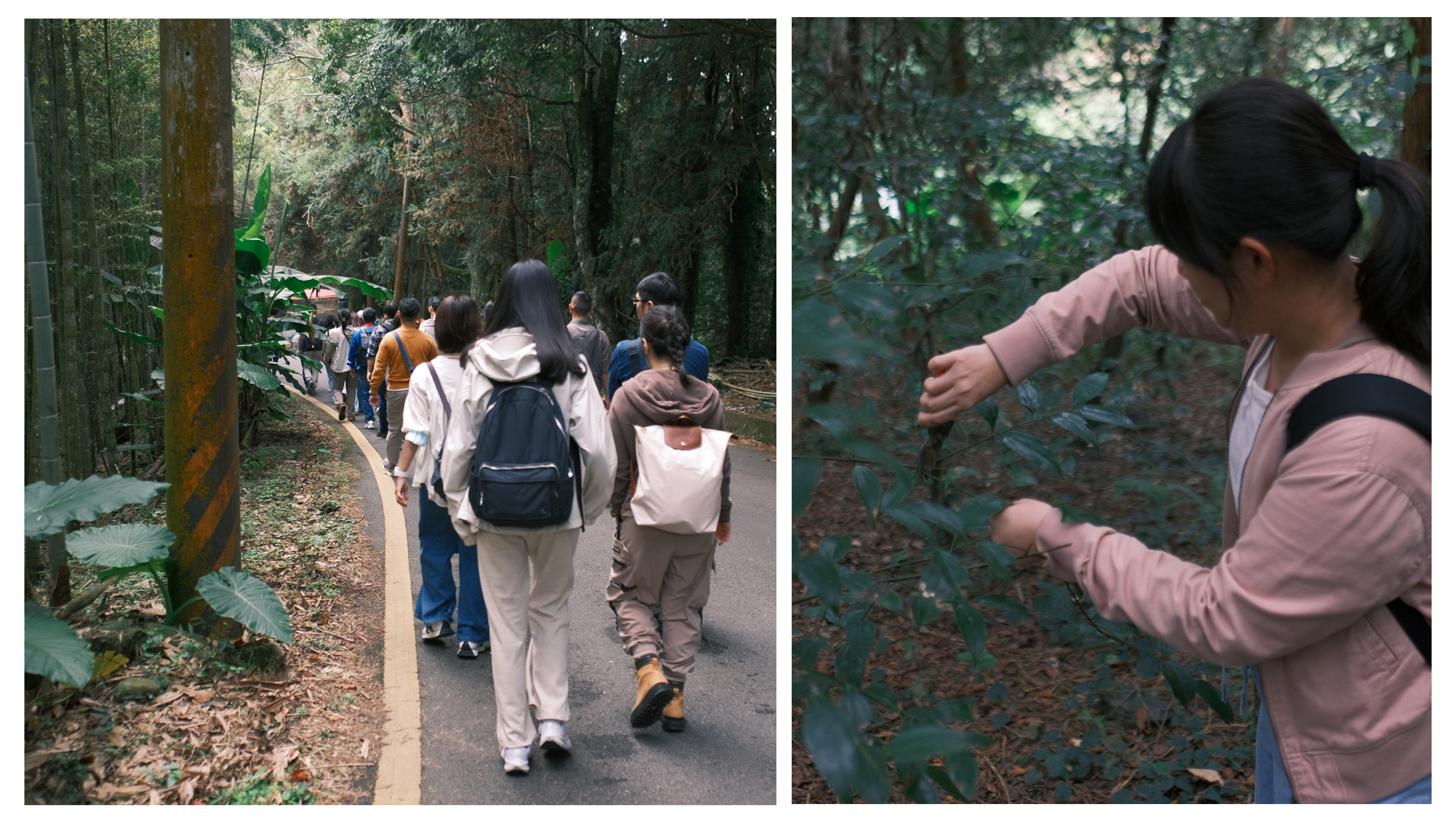Feature Story
2025/11/24
ASUS Employee Nature Experience: Pangolin Tracking in Daxueshan
-
Copied to clipboard
Since ASUS launched the " Daxueshan Middle-Altitude Pangolin Habitat Enhancement and Conservation Project" in 2024, the project has aimed to foster a symbiotic relationship between the environment and people. This is achieved through expert research on habitat quality, various community engagement efforts by non-profit organizations, and diverse approaches such as resource integration and stakeholder communication, connecting Dasyueshan's habitat, species, and local communities. To enhance employees' understanding of the current status of the Dasyueshan habitat, ASUS organized a series of progressive experiential activities. These included post-screening discussions of documentaries, species identification workshops, and field tracking training to cultivate employees' interest and imagination regarding natural issues. Finally, at the end of the year, a real-world field trip led ASUS employees to visit the Dasyueshan project site, allowing them to witness firsthand how humans and the environment coexist amidst changing times.
Forest Ramble: Dasyueshan's Natural Environment and Forestry History
The ASUS Sustainability Team visited the site of the "Dasyueshan Mid-Altitude Pangolin Habitat Enhancement and Conservation Project." Led by the Kuan Shu Educational Foundation, which has long guided local farmers, and Professor Sun Ching-Min's team, which conducts pangolin research, ASUS colleagues strolled through the forest. They traversed bamboo groves and Taiwan cinnamon forests, walking towards the Dasyueshan Bridge.
Under the guidance of the tour leader, everyone learned about Dasyueshan's rich forestry history. From a logging site during the Japanese colonial period to the Dasyueshan Forestry Company during the U.S. Aid Period, it later transformed into a national forest recreation area. Since the 1980s, suitable environmental conditions led to the cultivation of fruit trees like Fuyu persimmons. However, as farmers aged anud traditional farming methods required pesticide spraying, orchard management became challenging. The Forestry and Nature Conservation Agency also promoted and guided farmers in Taiwan cinnamon afforestation, and invited the Kuan Shu Education Foundation to assist farmers in adopting eco-friendly cultivation methods – grass cultivation – for local agriculture and a shared learning program for Fuyu persimmons in national forest lands, thereby revitalizing the mountain village economy. To help colleagues understand the diverse forestry economy of the Dasyueshan area, this trip also provided an opportunity for them to personally experience harvesting Taiwan cinnamon leaves. As its name suggests, Taiwan cinnamon has a cinnamon flavor, but its unique feature is that eating the leaves directly releases a natural sweetness. Therefore, the Kuan Shu Education Foundation collaborated with I-Mei Foods to launch Taiwan cinnamon sandwich cookies, allowing this new economic crop to combine economic benefits with local environmental protection, thereby helping to increase farmers' willingness to switch crops.
.png)

Picnic under the Trees at Chuyunshan Nursery: Dasyueshan Seasonal Lunchbox and Fresh Persimmons, Taiwan Cinnamon Tea

Lunchbox and Fresh Persimmons, Taiwan Cinnamon Tea
At noon, colleagues enjoyed a therapeutic picnic under the trees in the afforestation area within the Chuyunshan Nursery. ASUS selected fresh seasonal meals prepared by local vendors, such as lunchboxes containing log-grown mushroom and jujube rice, seasonal wild vegetables, and red yeast rice chicken. They also freshly brewed sweet Taiwan cinnamon hot tea from leaves picked that morning, paired with fresh Dasyueshan Fuyu persimmons grown in pangolin-friendly orchards. The lunch atmosphere was peaceful and comfortable, allowing colleagues to experience nature through all five senses. They also realized the interconnectedness of eco-friendly actions: from farmers' grass cultivation and the production of sustainable ingredients to consumers' supportive purchases, a sustainable model that protects ecology and achieves economic benefits can be created.
Pangolin Tracking: A Hands-on Experience
Previously, colleagues had participated in pangolin conservation training courses at ASUS headquarters, learning basic knowledge about pangolins, their conservation status, and experiencing the use of tracking devices indoors. However, this time, upon arriving at the Dasyueshan project site, in the mountainous forest environment where pangolins have been sighted, they learned from researchers how to use radio transmitters to locate tracking devices. By carefully listening to the signal sounds and narrowing down the direction, they could pinpoint the potential location of a pangolin. Through the researchers' professional explanations and observations, colleagues gained a deeper understanding of pangolin ecology, research methods, and how to identify their burrows. Following the directional signals deeper into the forest step by step, they eventually found a simulated "little pangolin" at a pangolin burrow entrance. This burrow was a real pangolin den, and an infrared camera was set up outside to record pangolin movements. This allowed colleagues a glimpse into animal tracking research, and the experience also gave them a profound understanding of the nature and challenges of wildlife survey work. ASUS has introduced long-range wildlife tracking devices from abroad, which are expected to assist the research team in mapping pangolin habitat ranges over large areas. The company looks forward to applying innovative technology to biological tracking and conservation efforts in the future.

This trip to Dasyueshan not only allowed colleagues to relax with a forest stroll but also immersed them in ASUS's biodiversity project site for a firsthand experience. Through connections with local communities and research teams, it enhanced employees' appreciation for Taiwan's local natural ecology. It also laid the groundwork for ASUS to continue driving more diverse actions, guided by the two main pillars of its Natural Capital Strategy Map: "in-value-chain management" and "out-of-value-chain actions." For more information, please click on the Natural Impact Assessment Summary.
Related Article
